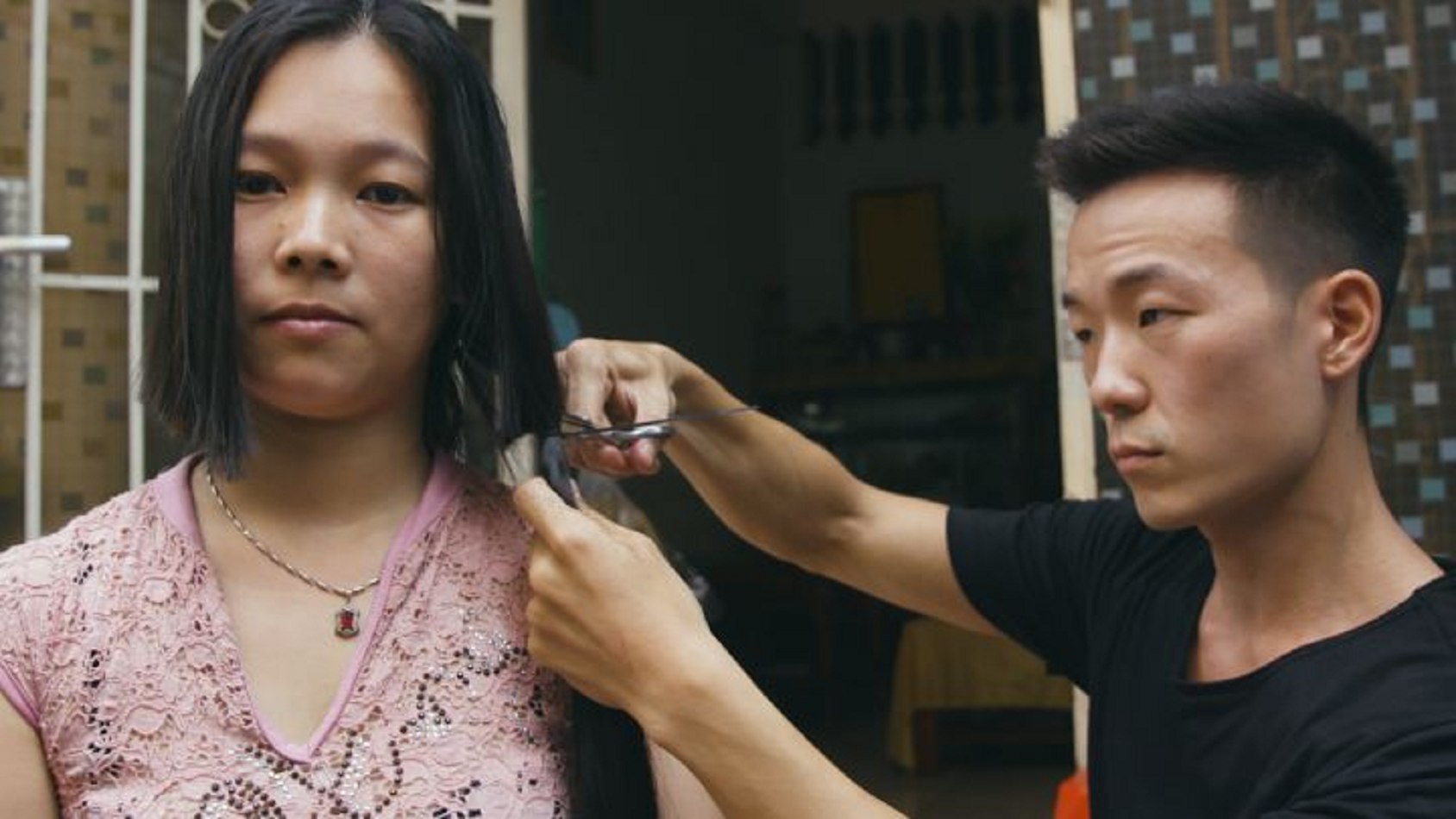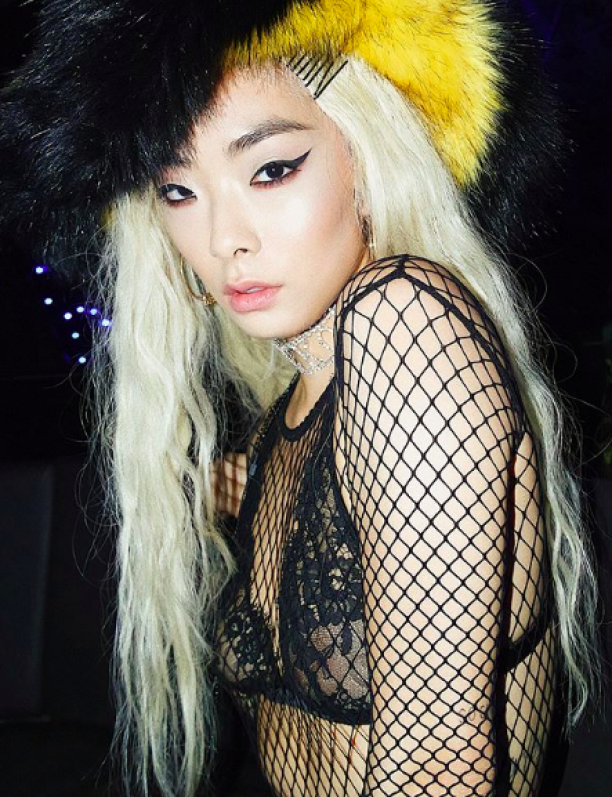The durable materiality of hair

Hair is a part of each of our lifetimes through its care, its tedious nature and its very fiber. Human hair and its biological nature consists of “biodegradable composite fibers" [1]. Although, when one comes to think of hair it is also synonymous with the hair on top of your head. The hair on your head becomes a symbol of beauty, specifically correlated to cis-femininity – when it is healthy, shiny, and long. This image is constantly accentuated by hair care commercials across the globe, through their airbrushed effects which construct the ideal image of feminine beauty: silky, smooth, and flawless.
Yet, through my own research on the very complex materiality of the hair fiber I have come to understand not only its relation to power dynamics and systems of oppression, but also its durable and natural composition. Our hair is a keeper of our own history, yet hair is considered out of place once it is chopped off at a hair salon or rinsed down the drain. As stated by Emma Tarlo in her book Entanglement: The secret lives of hair, “[...] hair is saturated with personal and cultural expectations and desires but it is also a natural fiber that is difficult to control." [2].
This quote also raises the notion that human hair in our contextual setting of Western Europe is always placed within a heteronormative matrix, where the values are always binary. Good hair = long, thick, shiny, straight or wavy and bad hair = lack of hair, shaved heads, balding, thinning. Yet, through new hair movements and their representation via online platforms, and through the appropriation of hair styles in our European context, new narratives have emerged that deconstruct the heteronormativity of hair.
In this blog I will give four examples of the durable materiality of hair through its re-use in: art, fashion, wig-making and environmental interventions.
1. The re-using of hair by artists

As I was searching for artists who work with human hair I encountered Sheela Gowda and her exhibition at the Tate Modern in 2009, titled Behold; an immersive large-scale consisting of four kilometres of hand knotted rope and approximately twenty car bumpers [3]. Gowda has also exhibited this installation at the Van Abbe Museum in Eindhoven for her solo exhibition Open Eye Policy in 2013 [4]. The striking aspect of Gowda’s work is the very raw materiality of the hair ropes, which the artist collected herself.
The hair ropes not only display the durable and strong composition of the hair fiber - when braided together into a rope has the capability to hold up metal car beams - but its sheer scale draws the viewer in to see the course, rough looking and tactile aspect of these hair ropes. Gowda stated in her Tate video interview, “[...] in Karnataka, the hair and car bumpers used in Behold are everyday materials with ritual significance. Short strands of human hair are commonly knotted around the bumpers of vehicles to ward off accidents and bad luck." [5]. So these braided ropes of hair and their innate materiality display a sense of sheer durability and strength, but also a representation of personal stories that the hair fibers hold. They show a braided network of stories.
The Centraal Museum in Utrecht also exhibited a spectacular and extensive exhibition on the materiality of hair in 2016 through the representation of contemporary artists and designers who work with human hair. The exhibition HAAR! menselijk haar in mode en kunst conveyed through dresses, jewelry, sculpture, and interactive spaces, “[...] that hair is a statement and an expression of identity." [6].
2. The re-using of hair in fashion

Through the exhibition in the Centraal Museum in Utrecht I found another hair expert that they had exhibited, who cannot simply be categorized as a hair stylist. Julien d’Ys, refers to himself as a “hair artist" [7], and his creative hair inventions have the ability to transform the entire look of a designer. D’Ys collaborates directly with designers, such as Rei Kawakubo (Comme des Garçons) in order to complete and complement the final runway look in, without even seeing the clothes before the runway show.
His thoughts and fantasies translate through his work by going beyond the hair stuck to our scalp. He creates sculptural forms through synthetic materials such as plastic, thread, and through the “[...] twisting and turning of model’s locks into face-obscuring styles." [8]
3. The re-using of hair for wigs
In recent years, through the extreme popularity of Instagram and Twitter across, a spotlight has been put on the comeback of the wig made from human hair (although wigs have been a staple part of the fashion industry and the black community, specifically the camp style that the black drag community has coined, for almost a century) the visibility of wigs on red carpet shoots and through social media influencers has made them both a commodity found in hair shops. Yet, wigs are also a high valued luxury fashion statement because of the real hair used to make them, costing up to 1,000+ dollars. In effect, the versatility of looks that wigs offer creates dynamic ways of expression. This dynamism of expression can be seen with the singer songwriter Rina Sawayama, who shares her wig looks via Instagram posts and constantly credits the wig makers themselves [9].

Yet this real human hair re-used for wig making is part of an extensive hair industry with a transnational network stretching across the globe. What we see – being positioned in Western Europe - is the final step of a long and exploitative process of creating Virgin Remy, silky and strong hair, ready to be made into bundles for wigs [10]. As stated by Role Models MGMT, “[...] wigs are a stable and necessity in the fashion and beauty industry and the demand for hair is costing some women to be seriously exploited." [11].
This widely invisible network of human hair started from the very roots of Western imperialism and has permeated into the present. In effect, the big question that most hair salons and wig makers don’t have the answer to, is where exactly the hair they order is coming from [12]. Fair hair trade is not common, especially when the very origin point of hair used for wig making is not ethically sourced.
But, REMY NY – founded by Dan Choi - is starting a new movement towards raising awareness of this imbalance caused by exploitative hair trade. Seeing as, the word ‘trade’ holds no value if the individuals selling their hair do not get paid the respective amount. His company Remy NY, is one of the first to ethically source where hair (used to make virgin remy bundles) is coming from [13].
Choi is based between Vietnam and New York and he makes it very apparent that he himself goes to cut the hair that he later on puts on his online webstore for wigmakers. He pays the women directly there on the spot while he sits down and cuts their hair. His talent as a hair expert is clear in the very transparent way he runs his own business. But of course, he is one of the few to start ethically sourcing and cutting hair to be re-used for wigs.
4. The re-using of hair for oil spills

Although it is not seen as a material for environmental interventions, hair is prone to adsorb oils. This is further exemplified by how certain hair types tend to get greasy after a period of not washing it (oils and sweat from our scalp and hands can stick to the surface of hair). The VOX documentary on How your split ends can clean up oil spills further states that its adsorbing trait makes hair one of the most effective materials to adsorb oil spills in the ocean. Hair can be tightly packed within synthetic nets (such as pantyhose and or stockings) and turned into tubes [14].
The VOX documentary further states that “Phil McRory, a hair stylist from Alabama USA first tested this process and NASA also studied and confirmed that his invention fully worked." [15]. So then Matter of Trust teamed up with him to develop the Clean Wave Programme that collects dust, fur feathers, hair and split ends in order to help clean up oil spills in the ocean." [16]. Because hair repels water [17] it provides the perfect material to create these booms to be placed in the ocean [18].
To conclude, hair’s very own materiality is both a keeper of socio-political histories and a provider of natural and renewable solutions to one of the largest global issues that the earth is facing: man-made pollution. Yet, the information regarding this invisible infrastructure of hair, with its network stretching across the globe requires more detangling in order for people working with hair in fashion, textiles and beauty, to convey these entangled and often dark stories. Hair is durable and renewable. Hence, the ways in which artists, designers and wig makers re-use human hair is constantly being experimented with due to the material versatility that hair has to offer.
Noten
[1] https://www.researchgate.net/publication/304904238_Human_Hair_A_Biodegradable_Composite_Fiber-A_Review
[2] Emma Tarlo, Entaglement : The secret lives of human hair, 2017
[3] https://www.tate.org.uk/art/artworks/gowda-behold-t14118
[4] https://vanabbemuseum.nl/programma/programma/sheela-gowda/
[5] https://www.tate.org.uk/art/artworks/gowda-behold-t14118
[6] https://www.centraalmuseum.nl/nl/tentoonstellingen/haar-menselijk-haar-in-mode-en-kunst
[7] https://www.thecut.com/2017/05/julien-dys-comme-des-garcons-interview-sketches.html
[8] https://www.thecut.com/2017/05/julien-dys-comme-des-garcons-interview-sketches.html
[9] https://www.instagram.com/rinasonline/?hl=en
[10] https://www.youtube.com/watch?v=VlZ1SWLBfPE
[11] https://www.rolemodelsmgmt.com/news/1356830/the-ugly-truth-behind-hair-extensions
[12] https://www.refinery29.com/en-us/2018/06/200036/human-hair-extensions-ethical-sourcing
[13] https://www.refinery29.com/en-us/2018/06/200036/human-hair-extensions-ethical-sourcing
[14] https://www.youtube.com/watch?v=l2Pll0V4HdM
[15] https://www.youtube.com/watch?v=l2Pll0V4HdM
[16] https://www.youtube.com/watch?v=l2Pll0V4HdM
[17] https://www.youtube.com/watch?v=l2Pll0V4HdM
[18] Matter of Trust Platform, https://matteroftrust.org/297/clean-wave-program



















Aanvullingen
Vul deze informatie aan of geef een reactie
Reactie